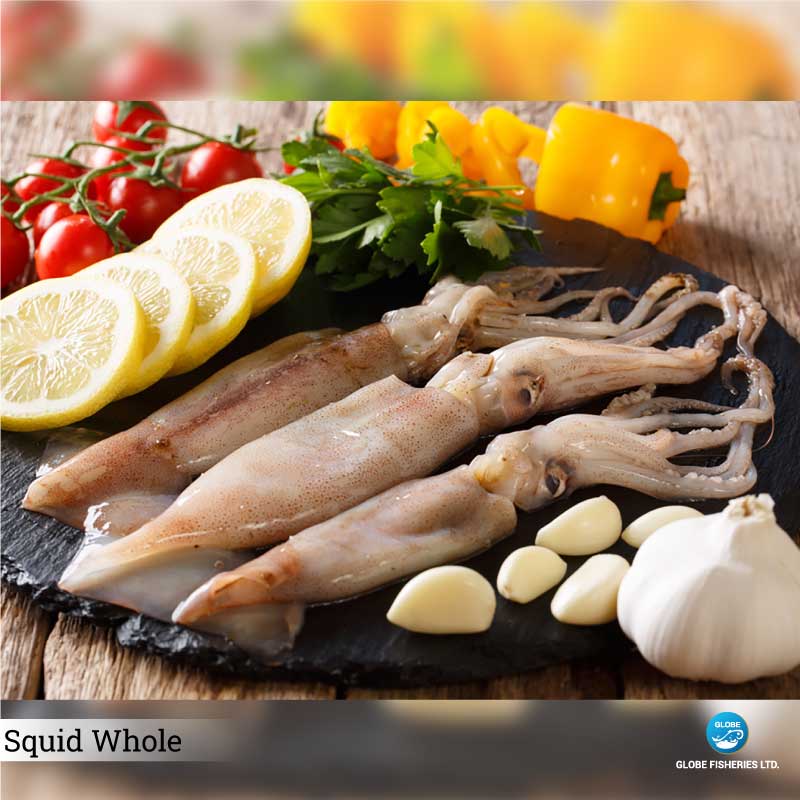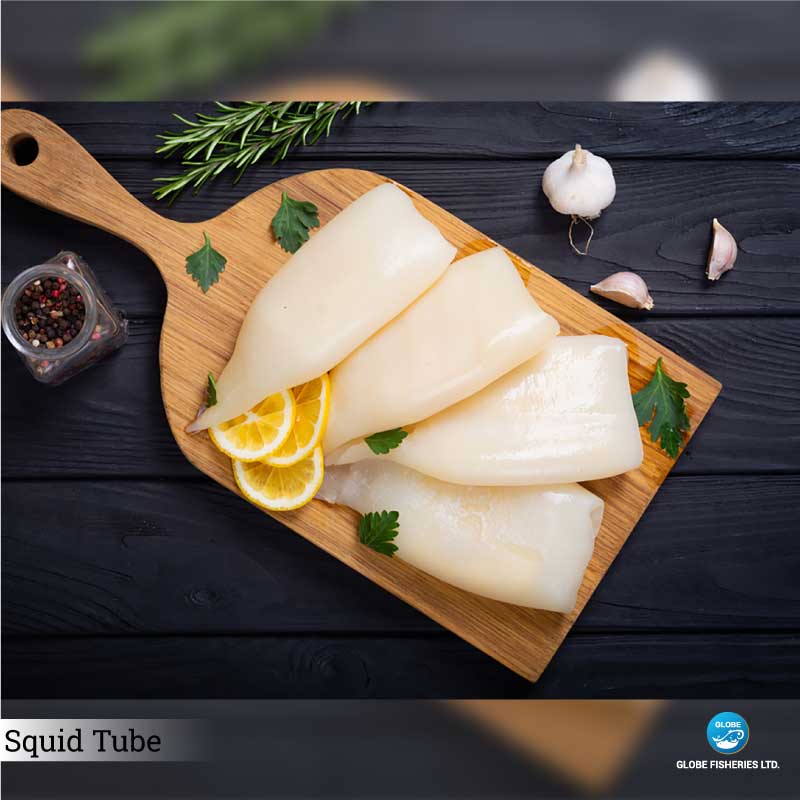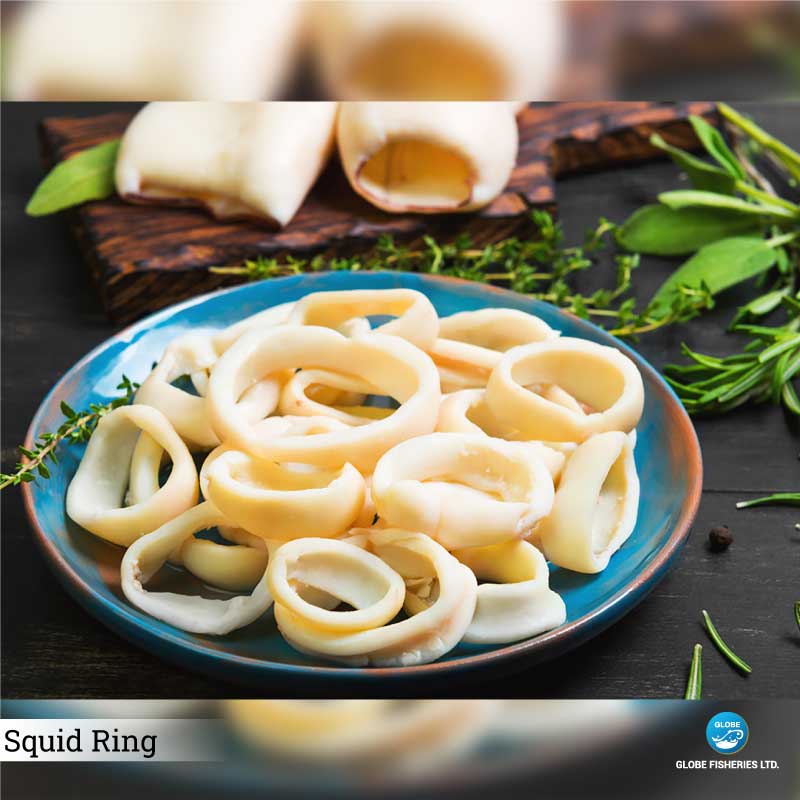


| Item | Description | Pack | Size |
| Squid Whole | Whole | IQF | Block | Semi IQF | As client's requirement |
| Squid Tube | Headless | Tentacle off | Skin off | Wing off | Tip on | IQF | Block | Semi IQF | As client's requirement |
| Squid Ring | Skin on / Skin off | IQF | Block | Semi IQF | As client's requirement |
Squid, also called calamari, is a cephalopod mollusk with eight arms, two tentacles and a tubular shaped body that narrows to a point and has two fleshy wings along the rear part of the body. Squid swim tail-first by pumping water through valves located near their head. The shells have evolved into a small bone or pen inside the body. Like octopus and cuttlefish, they are cephalopods. There are many species in all seas, ranging in length from one inch to the Chilean giant squid of six feet and one hundred pounds. Even larger monsters are thought to live in very deep water. Squid grow fast and live only 12 to 14 months.Squid are cephalopods, a word meaning “head foot.” They are a close relative of the octopus and a distant relative of bivalve mollusks. More than 300 species inhabit the world’s oceans, but fewer than a dozen comprise 90 percent of the global catch;
Squid has excellent shelf life if handled with reasonable care. It is little affected by freezing, and the texture is unchanged even if the flesh is frozen and thawed a number of times. Fresh squid should have a sweet smell. It becomes rather pungent with age. Skin spots and color are not reliable guides to quality.
We can mainly provide these 5 species of squid. Illex Argentinus, Dosidicus Gigas, Todarodes Pacificus, Ommastrepes Bartrami, Loligo. Cooked squid is mild and has a subtle sweetness. The meat is firm yet tender. Illex squid has large, 8- to 12-inch tubes and is coarser than Loligo. Raw squid meat is ivory beneath a naturally speckled membrane. Cooked squid is opaque white and firm. Fresh or thawed squid should be moist, shiny and ivory colored. Pink, yellow or purple flesh indicates deterioration.Edible parts of the squid include the arms (tentacles), the mantle (tube) and the fins (wings). The body is covered with a thin skin that may be removed before cooking. Squid ink is often used to make black pasta. Because the market prefers a white-meated product, squid are sometimes “bleached” in a brine solution to enhance whiteness. The tentacles, wings and mantle (body) are all edible. There is a thin, soft skin covering the body and wings, which is usually removed before cooking. The skin changes color dramatically after the squid is caught. This is a natural process and is not a symptom of decomposition. Squid may be “bleached” by soaking it in iced water. This reduces the color changes and whitens the skin.
Squid is processed into tubes, rings and strips. Steaks, circular pieces cut from the mantles of large squid and usually tenderized with a needle machine, are also produced as a retail trade alternative to expensive abalone steaks. Fried calamari has become a mainstay on many restaurant menus, which has contributed to an explosion in domestic usage. A great deal of squid is frozen whole for bait, used by both sport fishermen and commercial line fishermen.